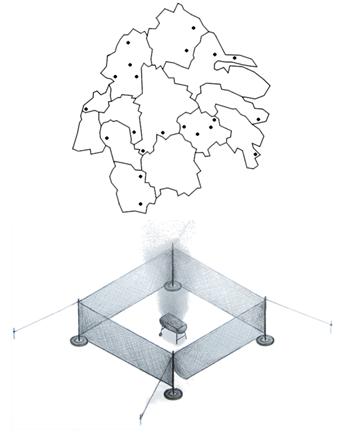Materials and methods

Smoke attraction traps is a unique method for catching pyrophilic insects without an actual forest fire. The study was conducted from 14 June to 31 July 2011 in 21 forest locations in Östergötland County, south-east Sweden. Smoke was generated in a fireplace made out of a 200 L metal drum. Birch logs were used as fuel for the fire, and smoke was created by putting humid forest litter on top of the burning birch logs. Insects were caught in a 1.5 m wide black nylon net set up at around the fireplace between 11:00 and 21:00. Insects considered in this study were Coleoptera and Microsania spp. of the Diptera order.
l
Forest fire history
l
The basis of the fire history used in this study was from the Swedish Civil Contingencies Agency, and supplemented by examining archives on forest fires held at local fire stations. Furthermore, many fires that lacked a spatial reference were given coordinates after consulting with the staff at the fire stations. These local records contained all fires greater than 100 m2 between the years of 1998-2011 in the county of Östergötland and a surrounding buffer zone of all neighbouring municipalities .
l

The 41 circles with different radii ranging from 100 m to 20000 around in the location for the smoke attraction trap in the site Rippestorp, in the county of Östergötland. The red circles represent the area of the forest fires.
Responsible for this page:
Director of undergraduate studies Biology
Last updated:
05/27/14
